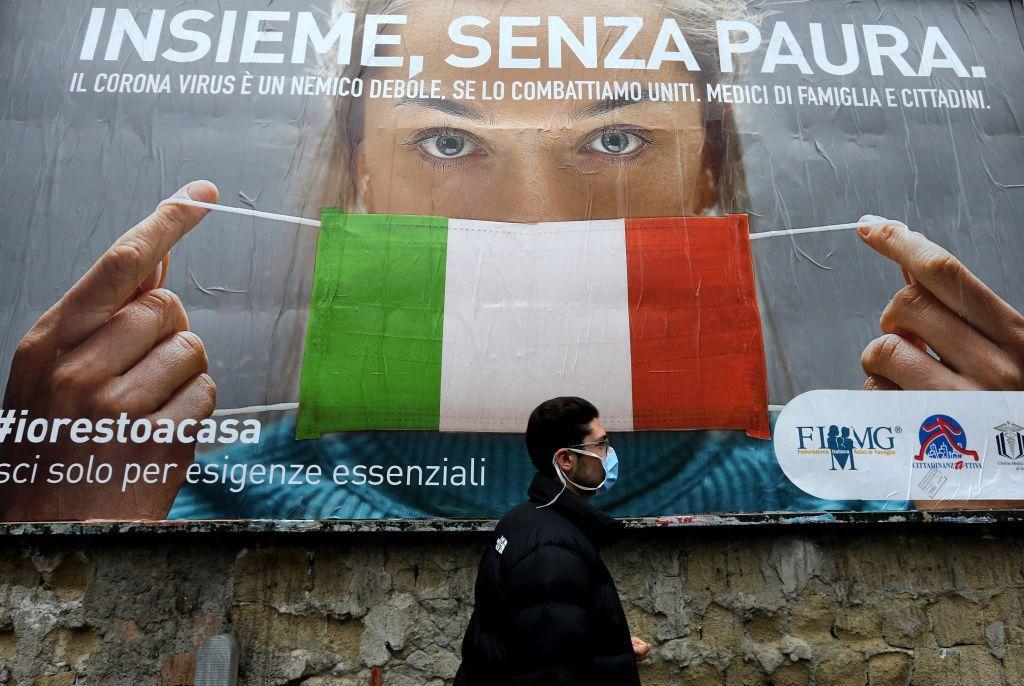Can Italy maintain its pandemic-era transformation?
Posted By Alexander Stubb and Fabrizio Tassinari on February 1, 2022 @ 11:00

Two years ago this month, Italy recorded its first domestic case of Covid-19 [1]. The country was the first in Europe to be hit by the coronavirus, and it offered examples of both the best and the worst of the epidemic. In March 2020, neighbours sang on their balconies to comfort one another as military transport convoys carried the dead out of Bergamo.
Today, Italy is battling another wave of coronavirus infections driven by the Omicron variant. But the situation on the ground now looks very different from those early days. Evidence suggests that Covid-19 in Italy has become endemic—not (yet) in epidemiological terms, but rather in its effect on residents. The virus has transformed behaviours and adjusted perceptions. A visitor returning for the first time after these two pandemic years would find a country that has changed—overwhelmingly for the better.
In terms of the Covid response, Italy is on the high end of compliance with public-health measures, relative to its European peers. Around 75% of the population [2] has received two doses of a coronavirus vaccine and more than 45% have had a booster shot. The government has effectively imposed a vaccine mandate on people over 50, one of only a few European countries to do so. And testing rates are consistently high. A ‘traffic light’ system of measures ensures that the country’s regions are able to implement the government’s decisions quickly as caseloads rise.
Italians overwhelmingly adhere to the new rules that govern access to restaurants, museums and public transport. They are ready to show the ‘green pass’ that indicates vaccination status and put on a face mask.
Of course, Italy is not exempt from the kind of uncertainties that are now common to all developed countries. Criteria for social distancing, mask requirements and targeted closures are being adapted constantly. The availability of personal protective equipment and vaccines has been an issue at times. And debates over remote work and education have replaced the weather as the main topic of casual conversation.
But these challenges should not obscure Italy’s radical transformation.
In December, The Economist [3] named Italy its country of the year for 2021. The magazine, frequently critical of Italy in the past, didn’t reach this verdict because of the national team’s victory in the European football championship or the triumph of Italian rock band Måneskin at Eurovision. It was a recognition of changes in the country’s politics.
Under the leadership of Prime Minister Mario Draghi, Italy has acquired an unusual degree of stability and predictability. The government enjoys bipartisan—almost unanimous—support. As a result, Italy has gained greater significance in Europe and on the world stage. But will it last?
Now that the presidential election has been resolved with the return to office of Sergio Mattarella, and with a general election set to be held within the next 15 months, there’s a concern that, as the sense of urgency dissipates, the political consensus will vanish, many of the recent gains will be squandered, and Italy’s ‘old normal’ will return with a vengeance. But this is not a foregone conclusion.
The European Union has allotted Italy the biggest share [4] of its Recovery and Resilience Facility, a whopping €191.5 billion ($303.8 billion) in grants and loans to be distributed over the next six years. The size and the scope of the RRF disbursement could drive a wholesale digital and green transformation of the country. With these funds, Italy can build the sustainable and technologically advanced critical infrastructure needed to navigate the 21st century.
A realist might caution against too-high expectations. Italy must still enact significant reforms in its public administration, judiciary and regulatory framework, and past experience suggests that that will be a monumental challenge. At a recent OECD seminar [5], it became apparent that bureaucratic red tape and a backlog of secondary legislation could thwart the changes that are needed to implement the recovery plan.
But the opportunity the RRF presents is too big to waste. It’s often said that economies need a Marshall Plan to recover from war, revolution or crisis. For once, the comparison isn’t merely metaphorical. For Italy, the RRF can be instrumental to consolidate the gains of the past year and turn a temporary systemic shock into permanent good governance.
Article printed from The Strategist: https://aspistrategist.ru
URL to article: /can-italy-maintain-its-pandemic-era-transformation/
URLs in this post:
[1] first domestic case of Covid-19: https://journals.sagepub.com/doi/full/10.1177/0300891620974755
[2] 75% of the population: https://vaccinetracker.ecdc.europa.eu/public/extensions/COVID-19/vaccine-tracker.html#uptake-tab
[3] The Economist: https://www.economist.com/leaders/2021/12/18/which-is-the-economists-country-of-the-year-for-2021
[4] has allotted Italy the biggest share: https://euobserver.com/coronavirus/152729
[5] a recent OECD seminar: https://www.eui.eu/events?id=543576
Click here to print.